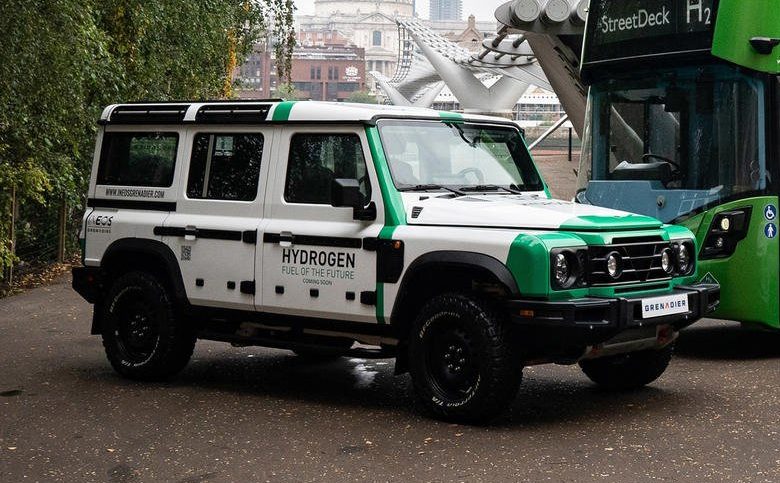FCEV version of Defender-inspired off-roader will begin testing in 2022.
Ineos will use Hyundai’s fuel cell (FCEV) powertrain technology for a hydrogen-fuelled concept version of the Grenadier 4×4, which is highly likely to evolve into a series-production car.
As part of a wide-reaching plan to ramp up its investment in hydrogen technology, Ineos will build the prototype in partnership with UK-based engineering firm AVL, ahead of on- and off-road testing beginning by the end of 2022.
AVL recently worked with Ford on a similarly conceived, one-off FCEV version of the Transit van, which will be used in a long-running trial programme to determine the viability and capability of hydrogen-fuelled commercial vehicles.
It is not yet confirmed exactly which powertrain the Grenadier FCEV will use. Hyundai currently sells the Nexo with a 95kWh fuel cell and a 117kW EV motor, but will usher in a heavily updated powertrain in 2023, which will be more compact but offer improved efficiency and durability.
Ineos’s partnership with Hyundai, detailed in late 2020, has mutual benefits for both parties: Ineos gains access to one of the most mature hydrogen-fuelled powertrains on the market for use in its vehicles, while Hyundai can tap into the British chemical company’s experience in producing and distributing hydrogen itself.
No date has been given for the retail roll-out of the Grenadier FCEV. The BMW-engined petrol and diesel variants will go on sale in Australia next year.
The announcement forms part of Ineos’s wide-reaching commitment to popularising hydrogen as an alternative fuel source. It has already pledged €2 billion (AUD$3.3bn) to its efforts in this area, and has today launched a ‘hydrogen advocacy’ campaign emphasising the benefits of the fuel source.
Ineos claims to be “Europe’s largest existing operator of electrolysis” – a means of hydrogen production – and says the 400,000 tonnes of low-carbon hydrogen it produces each year is the equivalent of replacing “up to 2 billion litres of diesel”.
Company boss Jim Ratcliffe said: “Electric cars are ideal for city centres and short journeys. But hydrogen is much better for longer journeys and heavier loads and that requires immediate investment in hydrogen distribution and hydrogen filling stations.
“The issue is that industry can only do so much, and the UK government must start to invest in the development of our hydrogen infrastructure to allow the gas to be much more widely used. At the moment, we are massively lagging behind Europe and the gap is starting to grow”.
As part of the company’s hydrogen campaign, it will also display prominent billboards across London and Glasgow, tour the country in a hydrogen-fuelled bus and display a hydrogen-fuelled car at the COP26 summit in Glasgow from 31 October to 12 November.
Felix Page




